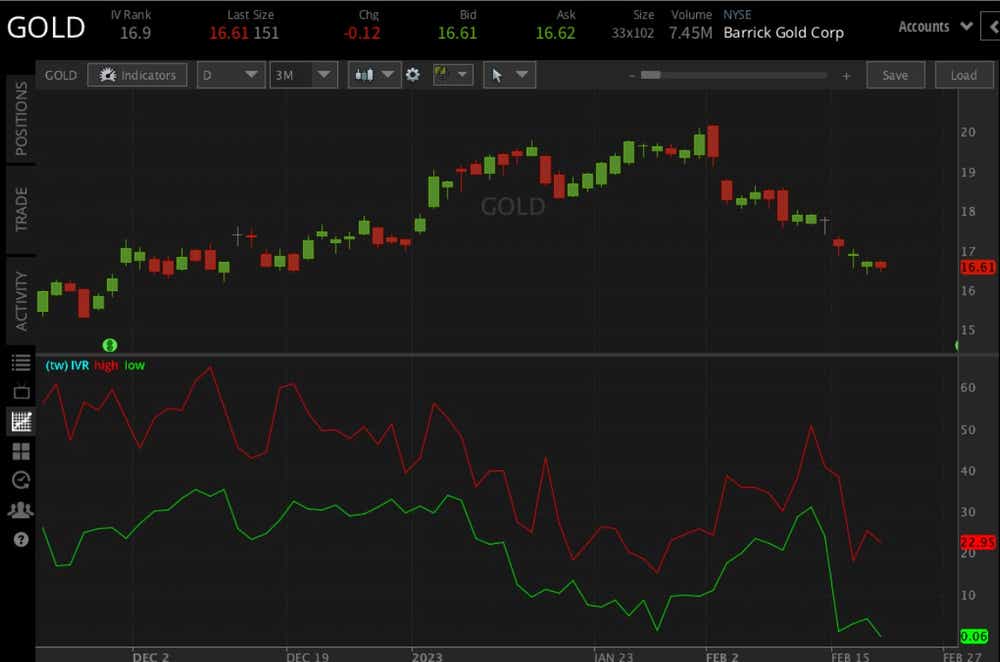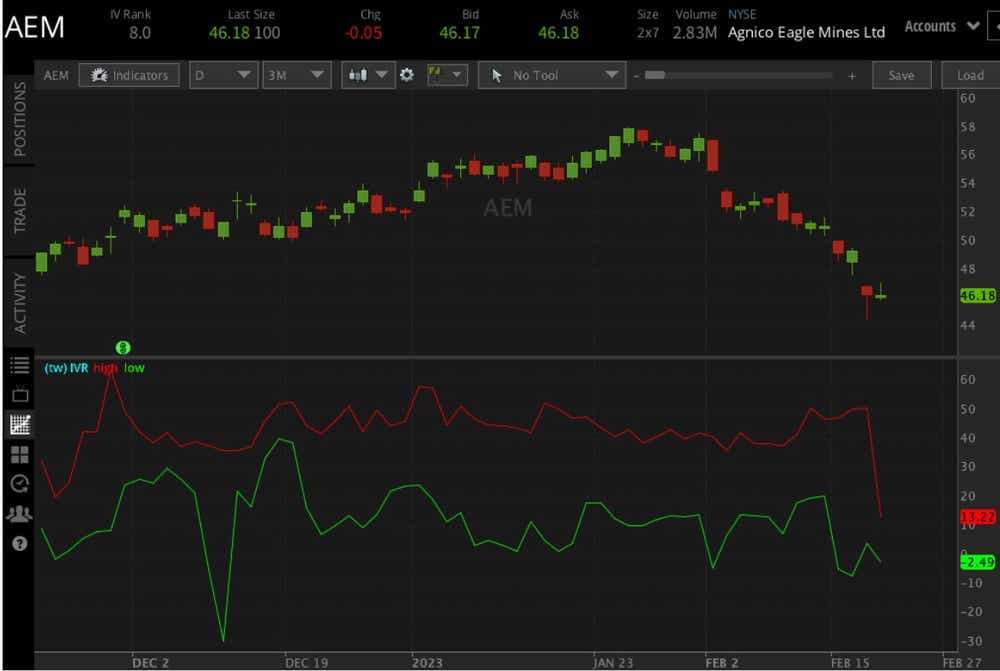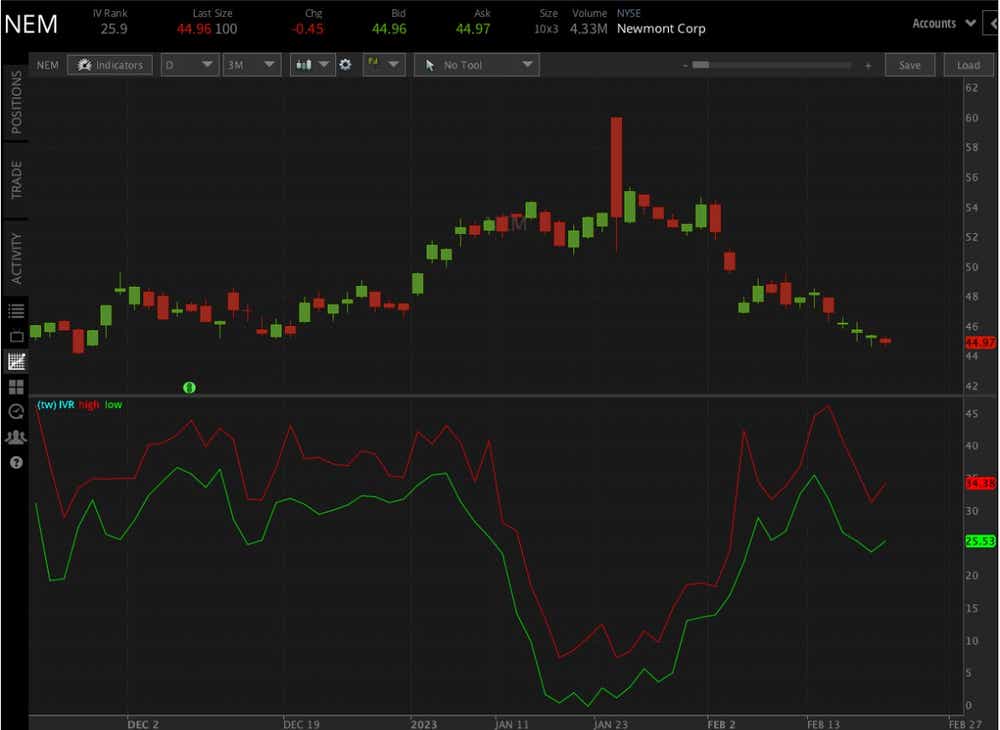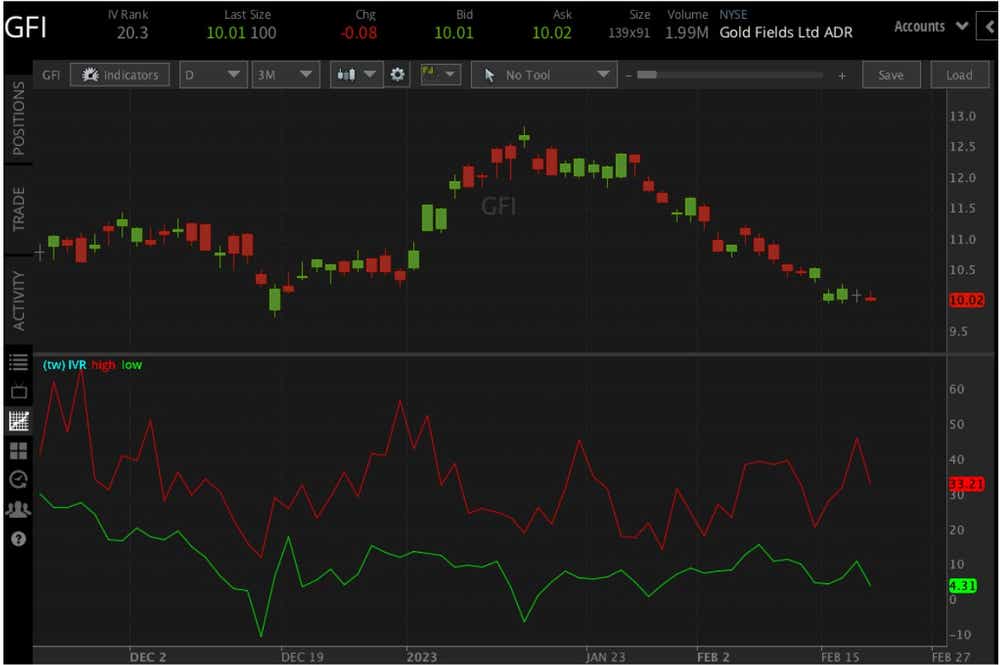Gold Stocks Fall as Fed and Costs Weigh: GOLD, AEM, NEM, GFI

Gold Stocks Fall as Fed and Costs Weigh: GOLD, AEM, NEM, GFI
Gold Traders Eye Fed Rate Hike Bets to Gauge Direction
Gold is trading lower on Tuesday after falling over 1% last week, bringing prices nearly negative for the year. In addition to a resilient labor market, a recent set of U.S. inflation reports has pushed Treasury yields and the U.S. Dollar higher as traders anticipate the Federal Reserve will hike rates for longer than previously expected.
Wednesday's Federal Open Market Committee’s (FOMC) February Minutes and Friday's Personal Consumption Expenditure Price Index (PCE) for January provide the next cues for Fed bets. There has been a lot of Fed commentary since the last FOMC meeting, so the PCE data should command more attention.
Analysts see core PCE—the Fed’s preferred metric that strips out food and energy prices—crossing the wires at 4.3% from a year ago. That would be slightly lower than 4.4% y/y in December. A number north of expectations would likely firm up rate hike bets and further degrade gold’s fundamental tailwinds.
Gold Miners Suffer Despite Strong Earnings Season
Gold miners are taking it on the chin. Last week, the VanEck Gold Miners ETF (GDX) fell over 4% to the lowest level since December. Miners are under pressure from higher input costs, falling gold prices and the threat of higher interest rates.
The sell-off also comes amid a mixed earnings season for miners. Price action dictates that traders are focused on the Federal Reserve, but if those fears recede, a rebound may be in the cards.
Barrick Gold (GOLD) Q4 2022 Earnings Summary
On February 15, Barrick Gold reported adjusted earnings per share (EPS) of $0.13 versus an expected $0.12, down from $0.35 a year ago. Revenue came in at $2.77 billion versus an expected $2.82 billion. Higher-than-expected costs and negative free cash flow surprised investors. Barrick estimates gold production for 2023 of 4.2 to 4.6 million ounces and 420 to 470 million pounds of copper. Despite a 6.64% drop last week, its IV rank (IVR) is about 17.4. For a directional position, a debit vertical spread offers a strategy. However, there is an upcoming ex-dividend date on February 27.

Agnico Eagle Mines Ltd (AEM) Earnings Summary
The third largest gold producer, Agnico Eagle Mines Ltd., reported adjusted earnings per share of $0.41 on revenues of $1.38 billion for its fourth-quarter 2022 earnings on February 16. The company guided for 3.2 to 3.44 million ounces of gold production for 2023 but raised its all-in-sustaining costs (AISC) to $1,140 - $1,190. The higher costs guidance weighed on the stock, sinking nearly 10% last week. It also boasts a low IVR, currently about 8.0. AEM has an ex-div date of February 28.

Newmont Corporation (NEM) Earnings Preview
Newmont Corporation (NEM), the world’s largest gold producer by output, is set to report earnings on February 23. The Denver-based miner recently made a $17 billion offer to buy Newcrest Mining Ltd., which, if acquired, would help cut costs and attract sustainable investors. Newcrest rejected the offer but will provide non-public information to Newmont and await a possible revised offer. In its latest earnings results, Newmont was on track to hit its full-year guidance production target of 6 million ounces with an AISC of $1,150 per ounce. The stock price will likely be sensitive to updated guidance. Newmont’s IV rank is around 25 despite the upcoming earnings. The big question, therefore, is how long the current paradigm will hold.

Gold Fields Limited (GFI) Earnings Preview
Gold Fields Limited (GFI), a South African gold mining firm, is set to report its 2022 fiscal year results before open on February 23. The stock fell 3.81% last week, during which time the company provided a trading update on production and cost guidance while also warning of lower year-over-year earnings. GFI expects a 7% to 13% earnings reduction from 2021, partly due to impairments and costs pressures and a 4% AISC increase to $1,1105 per ounce, which is still below its previous guidance of $1,140 to $1,180 per ounce.

Options involve risk and are not suitable for all investors. Please read Characteristics and Risks of Standardized Options before deciding to invest in options.